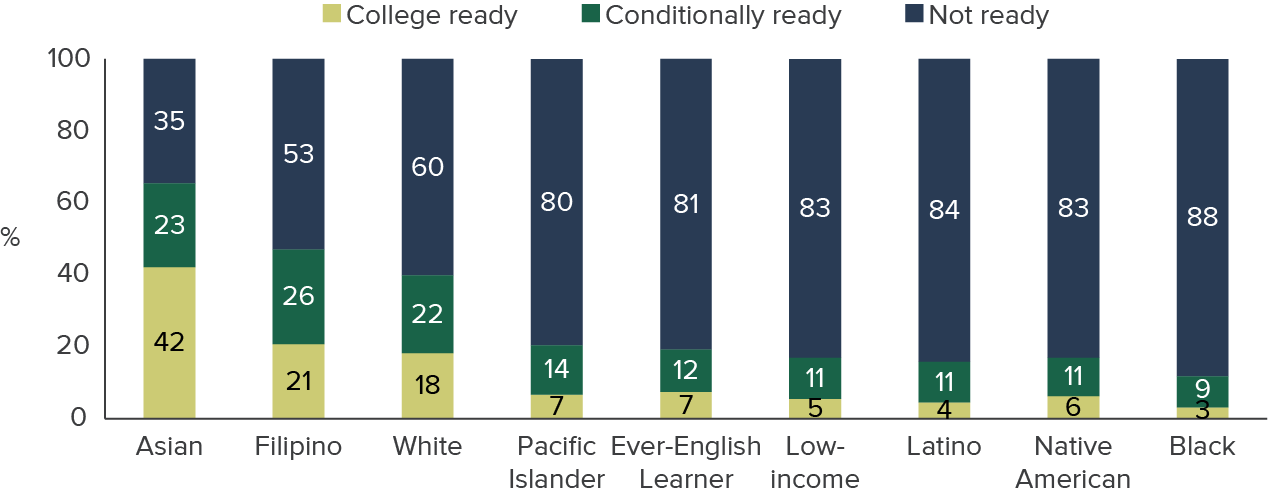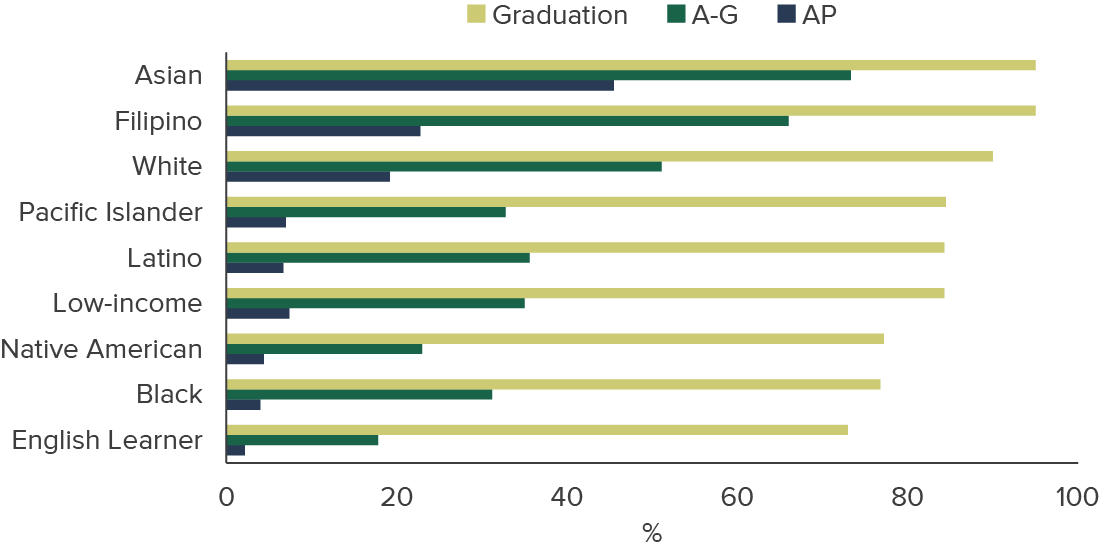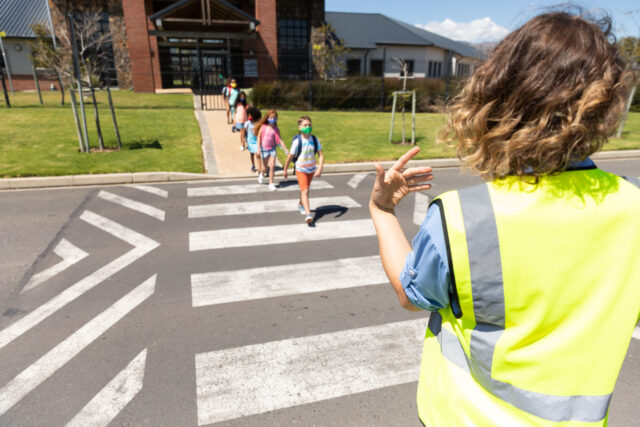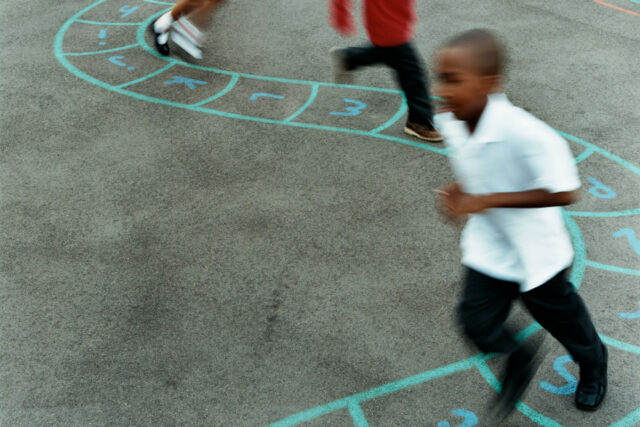Recent test scores show declines in college readiness.
- Performance on the state standards tests in 11th grade is an important measure of college readiness.
- About 55% of students were deemed college ready in English in 2022–23, compared to 60% in 2016– Declines in math were similar, but levels of preparation are lower.
- Demographic groups with historically lower college enrollment—Native American, Black, low-income, and Latino students, and students who have ever been categorized as English Learners (ever ELs)—were deemed ready for college-level math at lower rates than their peers.
- Nearly two out of three Asian students (65%) were deemed ready, compared to 47% of Filipino students and 40% of white students.
Most California 11th graders are underprepared for college-level math

SOURCE: California Department of Education, SBAC math scores, 2022–23.
NOTES: “Not ready” means that the Smarter Balanced Assessment (SBAC) performance standard was not met and that students are not prepared for college-level math at the CSU system, “Conditionally ready” indicates that the SBAC standard was nearly met and that students will be prepared for math at a CSU school if they take and succeed in a grade 12 math course. “College ready” means the SBAC standard was met or exceeded. We rely on the racial/ethnic disaggregation provided in CDE data. We use low-income to refer to children from families that are socioeconomically disadvantaged (which CDE defines to include a number of measures, most notably eligible for free or reduced-price meals).
Rising graduation rates may not indicate improved college readiness for all students.
- Graduation rates have been rising in California for all demographic groups. Yet gaps between Asian and Filipino versus Black, Native American, Pacific Islander, and Latino students remain substantial. For example, 95% of Asian and Filipino students graduate, compared to 77% of Black students.
- During the pandemic, many school districts reverted to state graduation standards, which serve as a baseline and are therefore less rigorous than most local requirements. This, along with other changes to course requirements, has raised concerns about the college readiness of recent high school graduates.
More students are completing “A–G” coursework required by the University of California and the California State University, but there are gaps across demographic groups.
- In 2021–22, about 45% of high school graduates completed A–G course work. This is up from 41% in 2016–17.
- But there are large disparities across student groups: 73% of Asian students completed A–G coursework, compared to 51% of white, 36% of Latino, 31% of Black, and 23% of Native American students.
- From spring 2020 through summer 2021—the heart of the pandemic—students could earn A–G credits with a “pass” rather than at least a C.
Gaps in graduation rates are smaller than gaps in A–G completion

SOURCE: California Department of Education.
NOTES: 2022 five-year graduation cohort for graduation rate, A–G: courses are required for admission to CSU and UC. AP: % of students having earned at least a 3 or above on two or more AP exams. A–G and AP course-taking rates not restricted to graduating students. We rely on the racial/ethnic disaggregation provided in CDE data.
Similar gaps persist in other indicators of college readiness.
- Gaps are especially wide in Advanced Placement (AP) course taking: 46% of Asian students have taken at least two AP classes and received at least an average score on the related exams, compared to only 7% of Pacific Islander, Latino, and low-income students, 4% of Black and Native American students, and 2% of EL students.
- The share of Asian students who earn the state seal of biliteracy (20%) is twice the share of Latino students who earn the seal. Only 3% of English Learners earned it in 2022– Recent legislation (AB 370) aims to increase opportunities for students to demonstrate proficiency in English in order to mirror the opportunities English speakers have to demonstrate proficiency in a second language.
Closing gaps in college readiness will require sustained efforts throughout the K–12 system.
- Gaps in college readiness are evident long before college applications are submitted. Sustained PK–12 funding directed to the highest-need students and federal and state pandemic recovery funding can help address these gaps.
- Chronic absenteeism makes college preparation much more challenging. Absenteeism surged during the pandemic; it has declined since 2021–22 but remains higher than it was in 2019. In 2022–23, 37% of Black and Native American high school students were chronically absent, as were 35% of EL and 32% of low-income students.
- State investments in dual enrollment programs, which give high school students access to college courses, might help better prepare more students for higher education by giving them the opportunity to acquire college credits and gain post-secondary experience.
Topics
Access Affordability Equity Higher Education




